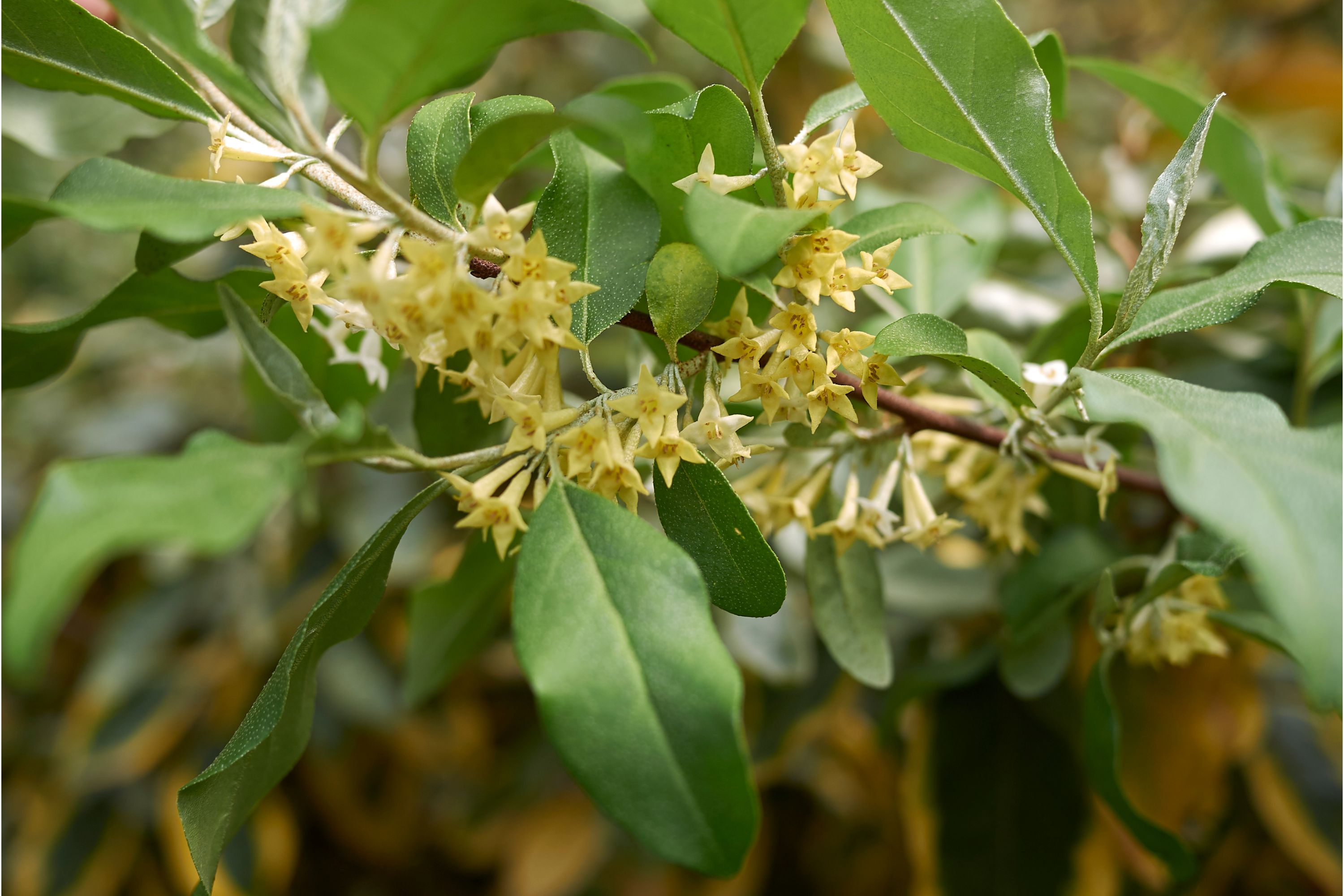Autumn olive
(Elaeagnus umbellata)

Description
Elaeagnus umbellata is known as Japanese silverberry, umbellata oleaster, autumn olive, autumn elaeagnus, or spreading oleaster. The species is indigenous to eastern Asia and ranges from the Himalayas eastwards to Japan. It is a hardy, aggressive invasive species able to readily colonize barren land, becoming a troublesome plant in the central and northeastern United States and Europe. Elaeagnus umbellata grows as a deciduous shrub or small tree, typically up to 3.5 metres (11 ft) tall, with a dense crown. It commonly bears sharp thorns in the form of spur branches. Flowers are fragrant and occur in clusters of white to yellow, 8–9 mm in length and 7 mm in diameter, and have four lobes. The leaves are alternate, 4–10 cm long and 2–4 cm wide with wavy margins. The leaves are covered with minute silvery scales when they emerge early in spring, but turn greener above as the scales wear off during the summer. The underside is more intensely covered in the silvery scales, differing from the related E. angustifolia, which remains silvery until it sheds its leaves in the fall. The flowers are borne in the leaf axils in clusters of 1-7. They are pale yellowish-white, fragrant, (often heavily fragrant) and have a four-lobed corolla 1 cm long. They are an important source of nectar for pollinators such as bees. The fruit is a small round drupe 1/4 to 1/3 inches (0.65 to 0.85 cm) in diameter. The unripe fruit is silvery-scaled and yellow. It ripens to red, dotted with silver or brown. The ripe fruits are pulpy, juicy and sweet, 3–9 mm in length, 5 mm in diameter, and average 137 milligrams in weight, with a thin skin covering the whole fruit. Having a sweet and tart flavor, the berries can be eaten fresh or processed for jam, condiments, flavoring, or used as a substitute for tomato. When mature, the red berries contain carotenoids, including considerable amounts of lycopene. In its origin regions of tropical and temperate Asia, E. umbellata is not considered to be an invasive species, but in many world regions, it has become invasive across wild and cultivated areas, particularly in the eastern United States. In the early 19th century, E. umbellata was purposely introduced to the United States and the United Kingdom for shelter belts, erosion control, wasteland reclamation, wildlife habitat, and for gardens as an ornamental.
Taxonomic tree:







